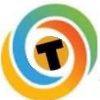NBTC Approves Trial Run Of 4G Cellular Broadband Service In Thailand
-
Recently Browsing 0 members
- No registered users viewing this page.
Announcements
-
Topics
-
Latest posts...
-
1,973
What Movies or TV shows are you watching (2024)
Getting it for free is pretty cost effective. -
53
Sadiq Khan Calls Out Trump’s Racism and Extends an Olive Branch
When did I agree London was not diverse from an ethnic perspective? -
81
BREAKING NEWS Biden lifts restrictions on Ukraine using US weapons to strike deep inside Russia.
I could of swore the prediction fools would of learned their lessons after getting their asse- whipped during the Presidential election. Some never learn it’s best to STFU when blowing smoke out of their asse-. Some have even left the forum due to the “Loss of Face”. -
7
Pheu Thai Eyes Winning Over 200 House Seats in Next Election
"constitutional technicalities" BS, MF were stitched up a treat by the Fascist dinosaurs still able to pull the strings. -
0
Thailand upgrading Suvarnabhumi Airport's immigration system
The transcription below provides news stories from across Thailand and Asia. The stories range from Thailand upgrading Suvarnabhumi Airport's immigration system to Cambodia’s water festival attracting millions. 1. Faster Immigration at Suvarnabhumi Airport Thailand is upgrading Suvarnabhumi Airport's immigration system, aiming to cut processing times to 45 seconds per passenger and reduce overall wait times to under 20 minutes. 2. Thai PM Deepens Ties with China Thai PM Paetongtarn Shinawatra met President Xi Jinping at APEC, agreeing on trade, clean energy, and education initiatives. The Buddha Tooth Relic will arrive in Bangkok on December 4. 3. British Student Jailed for Smuggling Cannabis A British student was sentenced to 30 months for attempting to smuggle 33kg of cannabis from Thailand to Amsterdam, with his girlfriend receiving a suspended sentence. 4. Cold Front Sweeps Across Thailand A cold front is bringing storms, cooler weather, and temperature drops to 32 provinces. Heavy rain and fog pose risks for travelers and crops. 5. Thailand Expands Renewable Energy with Solar Farms Thailand plans 14 new floating solar farms at hydroelectric dams, boosting renewable energy use to 51% by 2037 under its latest energy plan. 6. Denmark Wins Miss Universe, Thailand Shines Denmark took the Miss Universe crown, while Thailand’s Opal Suchata Chuangsri earned third runner-up for her advocacy and resilience. 7. Biden Strengthens Trilateral Alliance at APEC President Biden met Japanese and South Korean leaders at APEC, focusing on regional security and launching a new Trilateral Secretariat. 8. Bangladesh Seeks Hasina’s Extradition Bangladesh's interim leader plans to extradite former PM Sheikh Hasina from India for alleged human rights violations during her tenure. 9. Malaysia Protests Philippines’ Maritime Claims Malaysia formally protested the Philippines' new maritime laws, citing sovereignty concerns over Sabah and overlapping claims in the South China Sea. 10. Cambodia’s Water Festival Attracts Millions Cambodia's Water Festival drew over 6.2 million attendees, celebrating Khmer traditions with boat races and cultural festivities in Phnom Penh. -
8
Female Journalists Rally Around Allison Pearson Amid Fears for Press Freedom
I look forward to you providing examples of me posting ‘hate’. -
61
new Wise account details, bank says fraud
This screenshot is what I received month back. So as explained in other posts I had to set up new "Wallet" account details with WISE. I also had to add new recipient to my billers/payees in my Westpac account. All that's changed for me is eg if I wanted to transfer 5k to my Thai bank. Step 1: Transfer 5k from Westpac to my Wise wallet a/c Step 2: Setup transfer from wise wallet to Thai bank. For others: the one slight hassle with verifying WISE wallet account was the verification steps. Pic of photo page of passport easy enough. The Selfie just would not work until I took it in natural light. -
81
BREAKING NEWS Biden lifts restrictions on Ukraine using US weapons to strike deep inside Russia.
the point is that western propaganda works, unlike ruski propaganda, I gave examples here
-
-
Popular in The Pub
.png.3b3332cc2256ad0edbc2fe9404feeef0.png.8488ab72b8bb2e508209bfe3211b6e08.png)






.thumb.jpeg.cf6ce0b59d8f8b53e201487c6cf7b1db.jpeg)
Recommended Posts
Create an account or sign in to comment
You need to be a member in order to leave a comment
Create an account
Sign up for a new account in our community. It's easy!
Register a new accountSign in
Already have an account? Sign in here.
Sign In Now